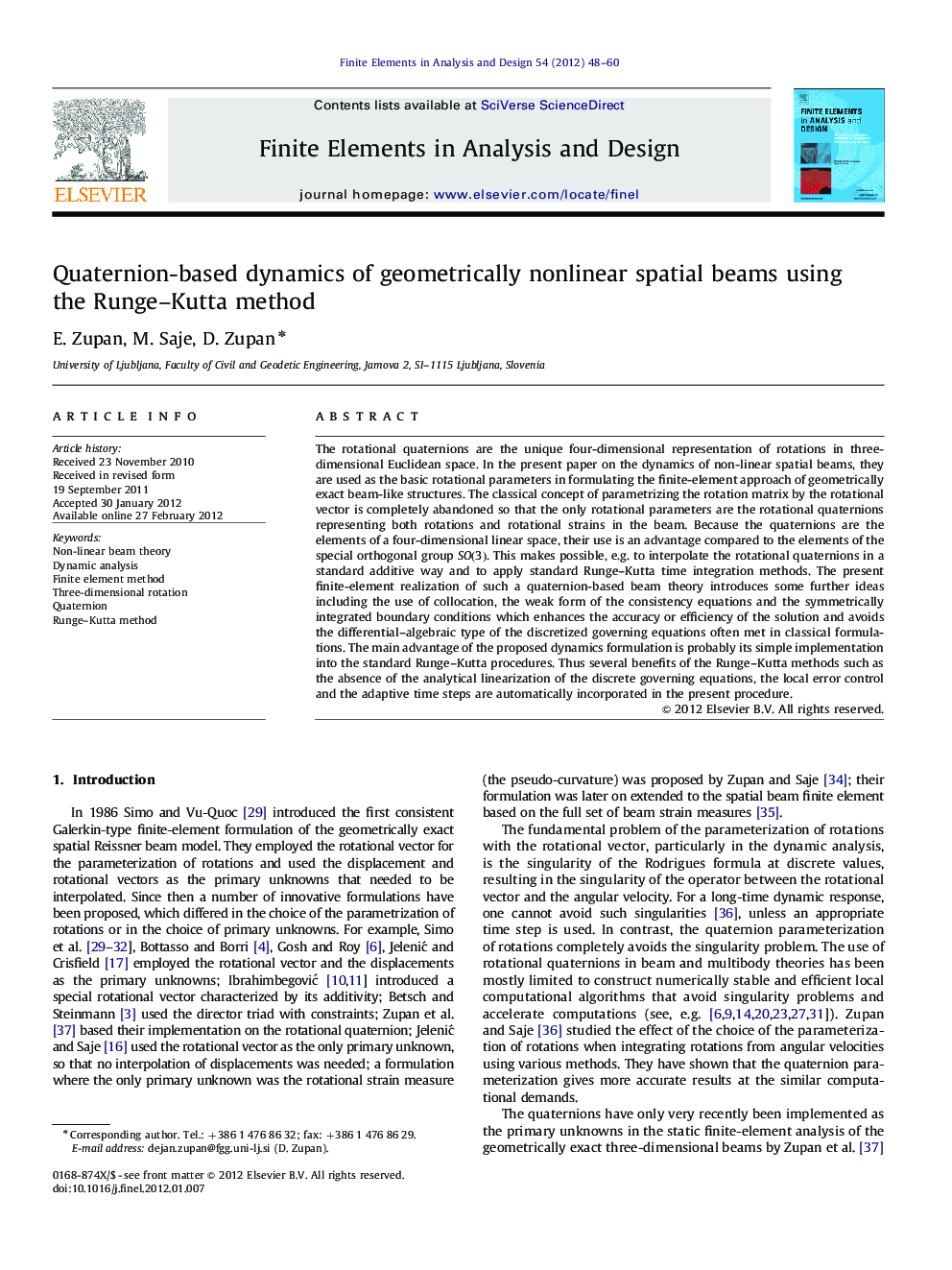| کد مقاله | کد نشریه | سال انتشار | مقاله انگلیسی | نسخه تمام متن |
|---|---|---|---|---|
| 514601 | 866771 | 2012 | 13 صفحه PDF | دانلود رایگان |

The rotational quaternions are the unique four-dimensional representation of rotations in three-dimensional Euclidean space. In the present paper on the dynamics of non-linear spatial beams, they are used as the basic rotational parameters in formulating the finite-element approach of geometrically exact beam-like structures. The classical concept of parametrizing the rotation matrix by the rotational vector is completely abandoned so that the only rotational parameters are the rotational quaternions representing both rotations and rotational strains in the beam. Because the quaternions are the elements of a four-dimensional linear space, their use is an advantage compared to the elements of the special orthogonal group SO(3)SO(3). This makes possible, e.g. to interpolate the rotational quaternions in a standard additive way and to apply standard Runge–Kutta time integration methods. The present finite-element realization of such a quaternion-based beam theory introduces some further ideas including the use of collocation, the weak form of the consistency equations and the symmetrically integrated boundary conditions which enhances the accuracy or efficiency of the solution and avoids the differential–algebraic type of the discretized governing equations often met in classical formulations. The main advantage of the proposed dynamics formulation is probably its simple implementation into the standard Runge–Kutta procedures. Thus several benefits of the Runge–Kutta methods such as the absence of the analytical linearization of the discrete governing equations, the local error control and the adaptive time steps are automatically incorporated in the present procedure.
► We study the dynamics of spatial beams using rotational quaternions.
► The only rotational parameters are the rotational quaternions.
► Quaternions have several advantages compared to the special orthogonal group.
► The rotational quaternions can be interpolated in a standard additive way.
► We enable the direct use of the standard Runge–Kutta methods.
Journal: Finite Elements in Analysis and Design - Volume 54, July 2012, Pages 48–60